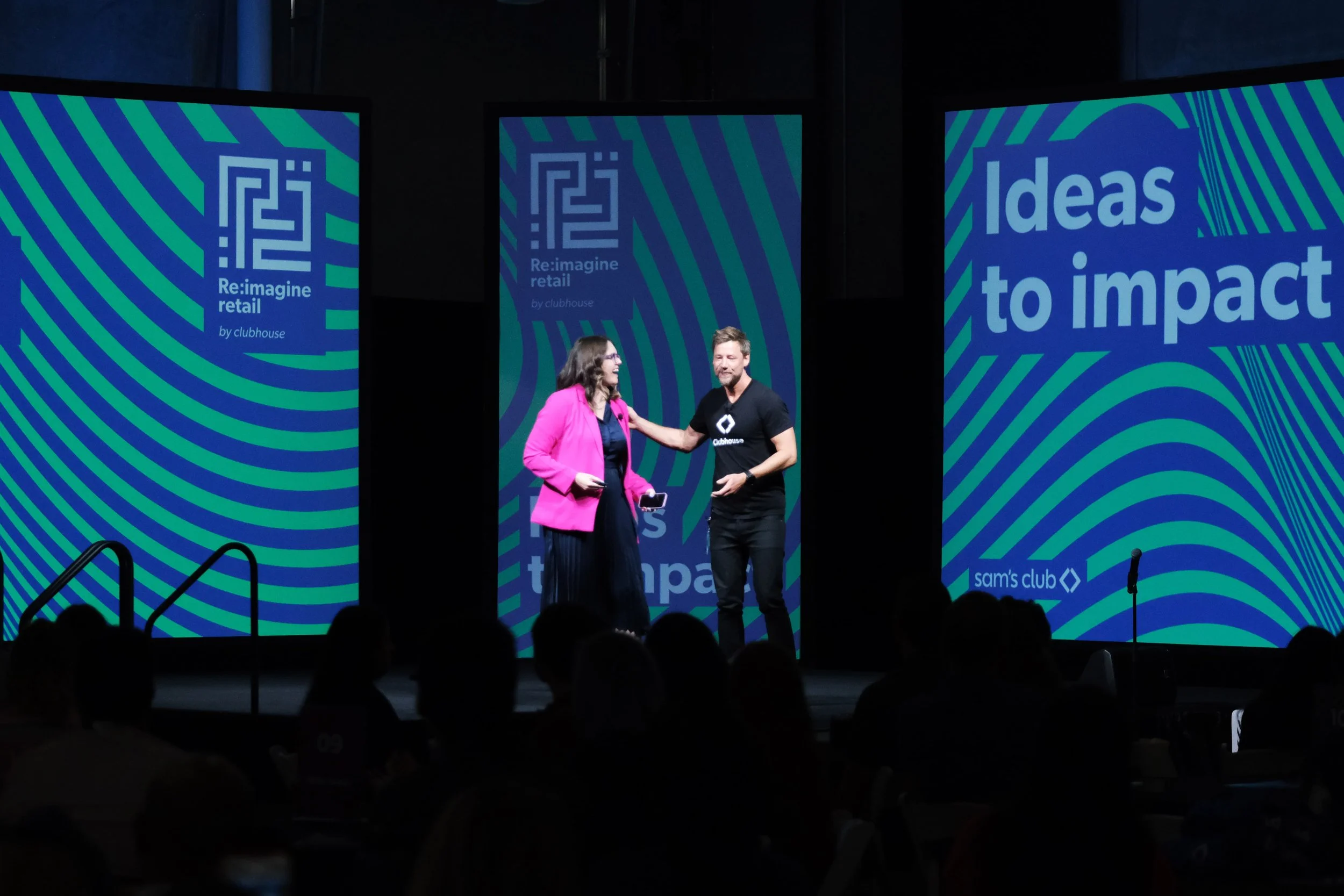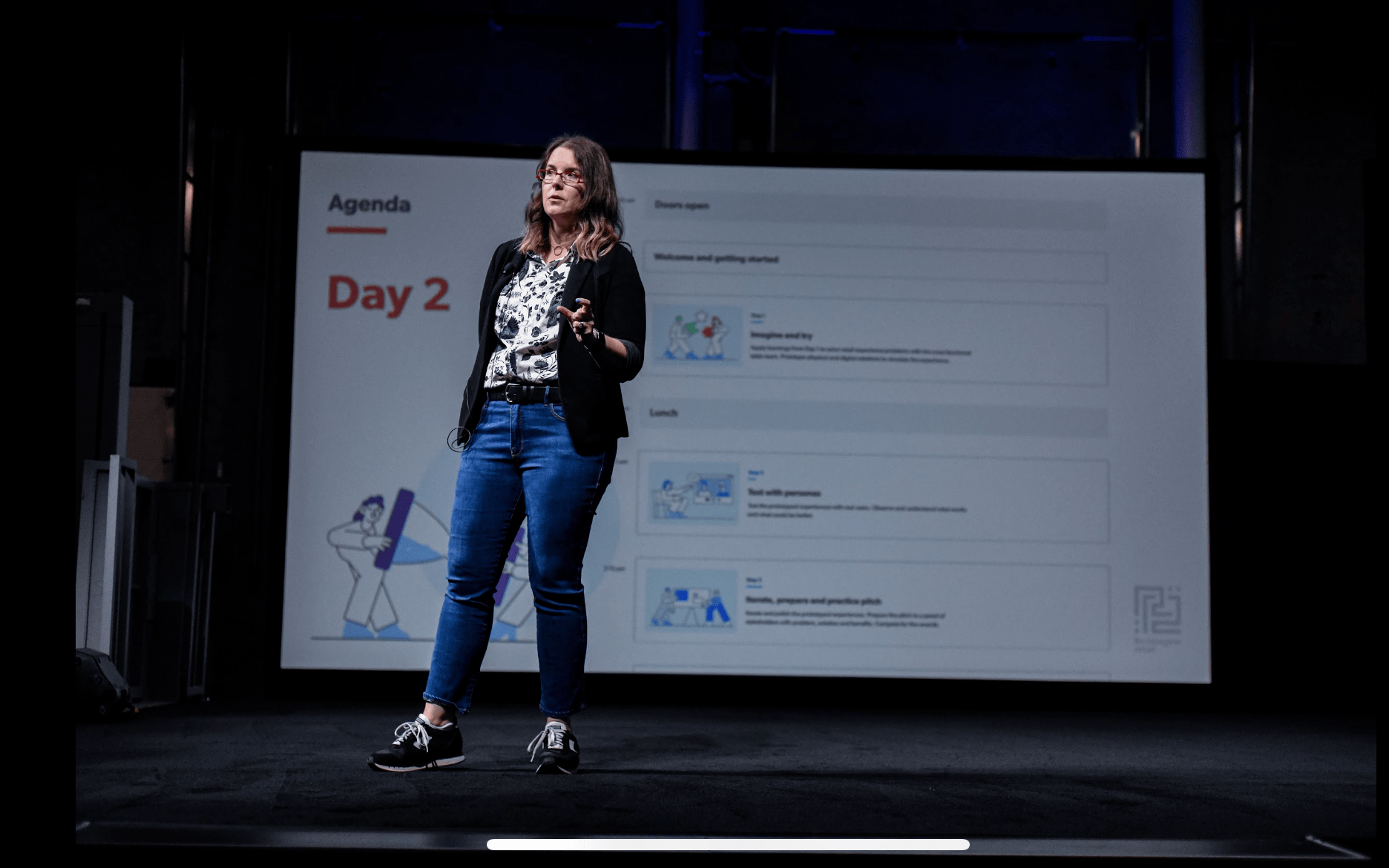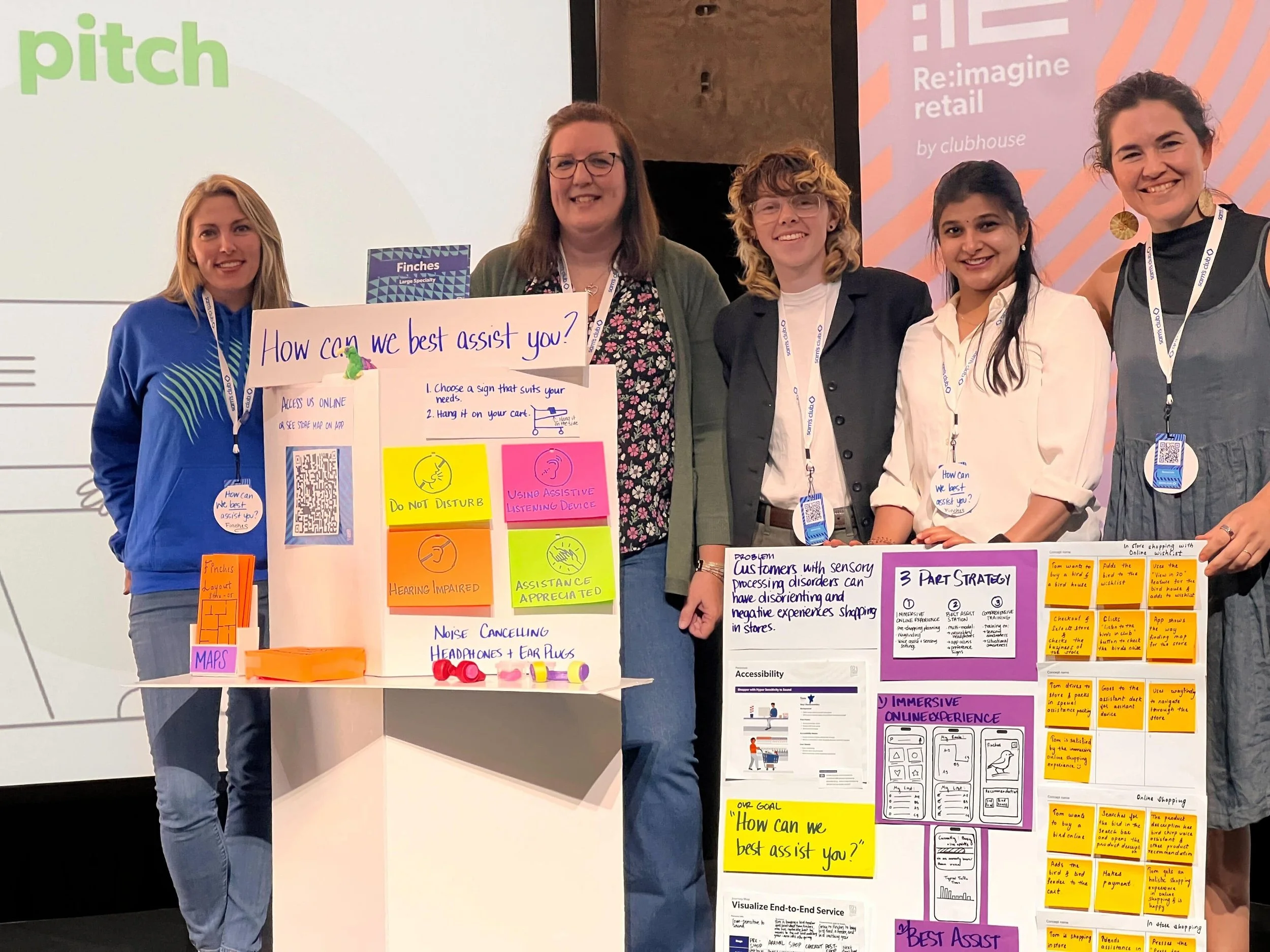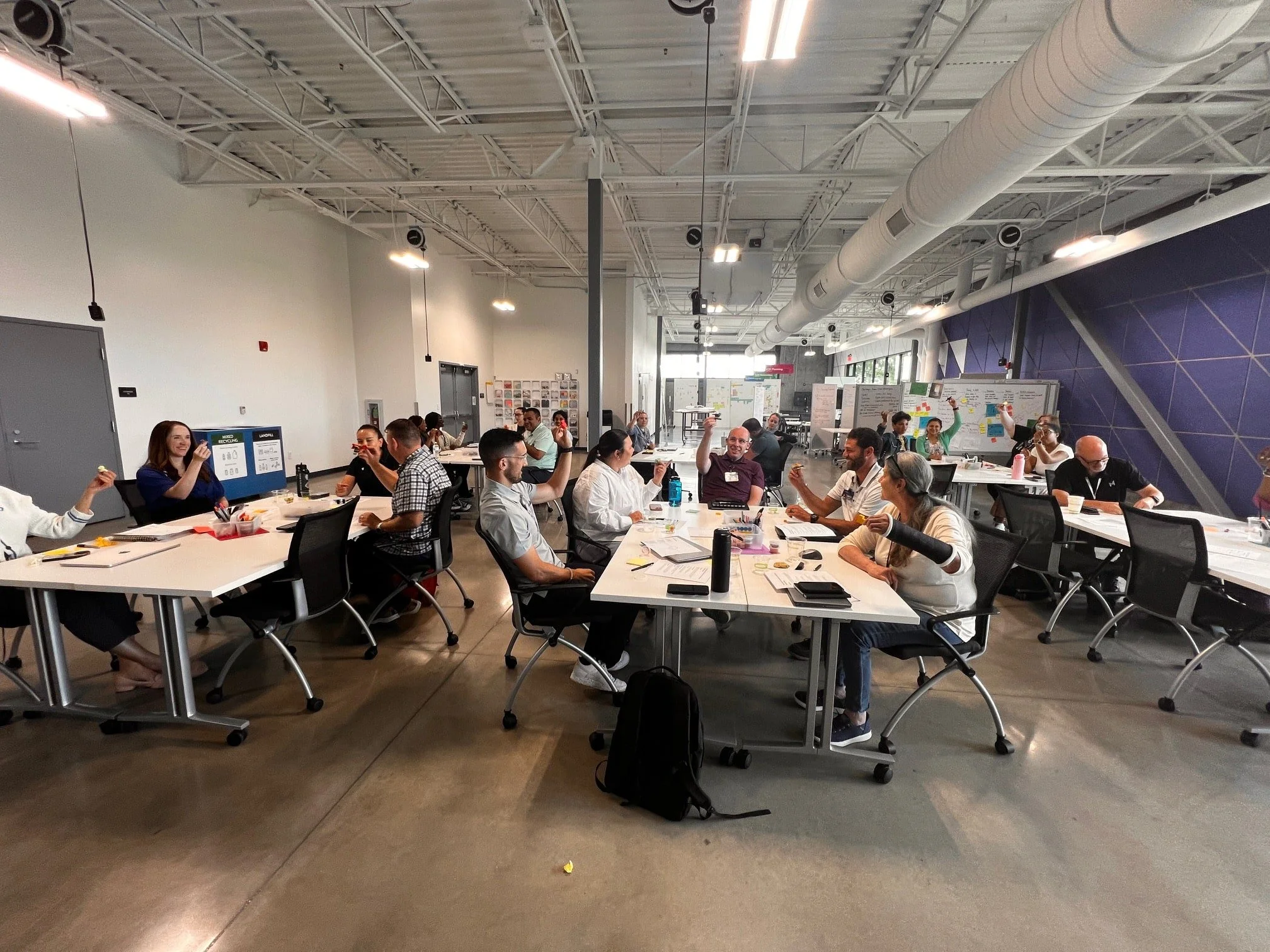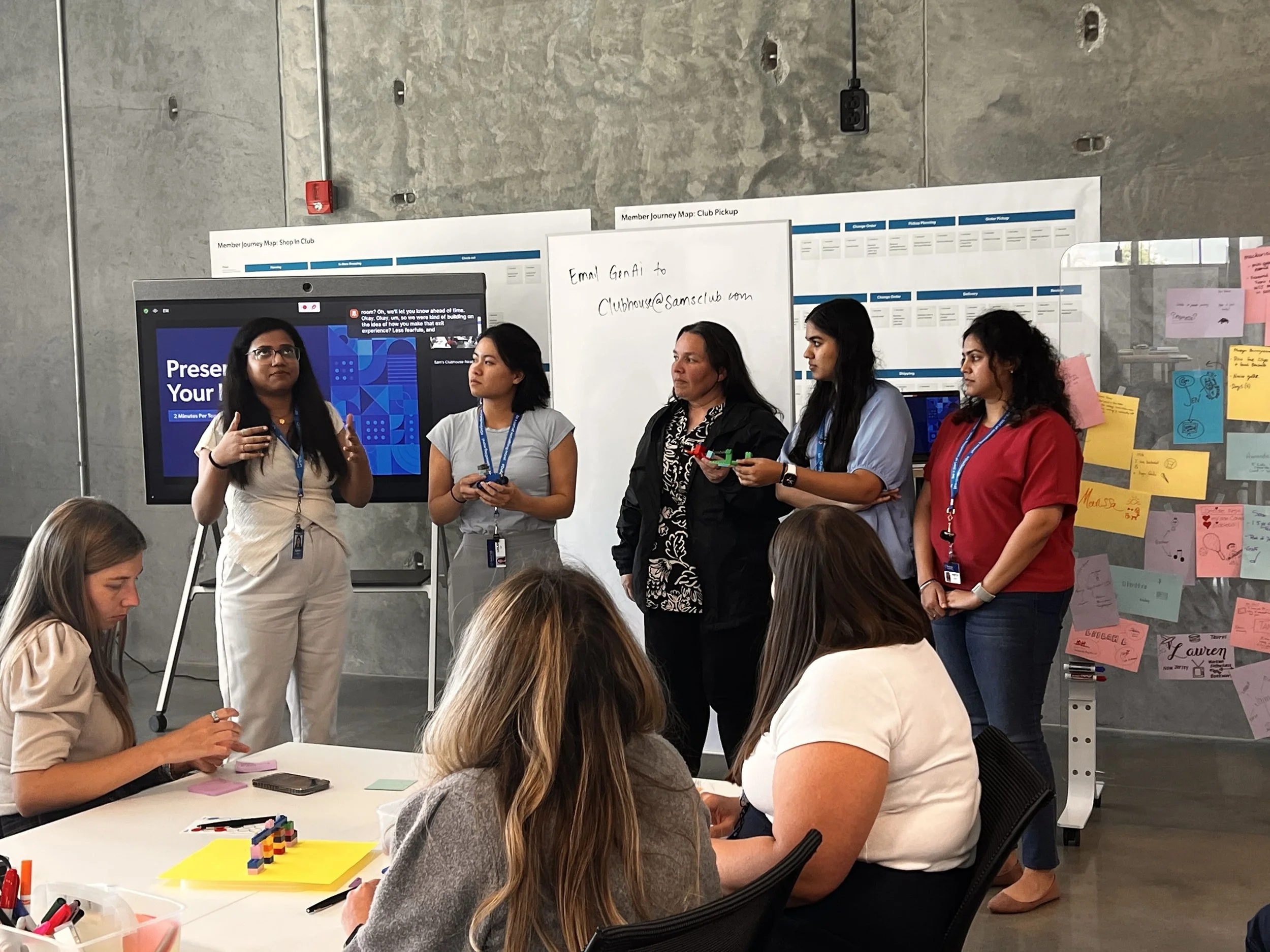Clubhouse Studio: Designing a Culture of Innovation
Building a creative hub that inspired new ways of working across Sam’s Club
IMPACT IN YEAR ONE
Launched Sam’s Club’s first 37,000-square-foot innovation studio. Trained more than 1,000 associates and engaged over 2,000 participants in cross-functional workshops. The space became a catalyst for collaboration, helping teams across the company connect and create in new ways.
The Opportunity
Sam’s Club was ready to rethink how teams collaborate.
The company had invested in digital transformation, but creative capability was not evenly distributed across functions. We needed a space and a culture that made design thinking accessible, practical, and part of everyday work.
My Role
As Studio Director, I led the vision, design, and activation of Clubhouse, reporting to the Senior Director of Research and the Vice President of Design.
I managed a small, multidisciplinary team and partnered with Product Design, Research, Marketing, and Operations to bring the studio to life. My focus was on creative direction, operations, programming, and facilitation that connected design to the broader business.
Leading Clubhouse taught me that creativity scales through empathy. The more we listened, the more people wanted to be part of it.
Leading Clubhouse taught me that creativity scales through empathy. The more we listened, the more people wanted to be part of it.
Approach
Designing a Space for Creativity
The insight was simple: creativity grows through experiences, not presentation.
I guided the visual identity and storytelling for the space, shaping how it communicated purpose. The Inclusion Lab and digital displays highlighted empathy, accessibility, and belonging.
Together, we defined the studio’s foundation so it could evolve as priorities evolved and new challenges emerged.
“Jen embeds design thinking and accessibility into the work. Her facilitation creates safe, collaborative rooms that deliver.”
Re:imagine Retail: Launching the Movement
To introduce Clubhouse to the broader organization, I co-led and emceed Re:imagine Retail, an enterprise-wide design sprint and conference that launched the studio.
More than 330 participants and 30 sprint teams from across Sam’s Club and Walmart worked side by side on real business challenges. The event showed what was possible when design, strategy, and operations came together around shared goals.
Re:imagine Retail became the model for future programming and proved that the best way to learn design thinking is by doing it.
30+ innovative retail ideas pitched during conference
Facilitating Enterprise Collaboration
After the conference, I led workshops and innovation sprints that brought Clubhouse principles into daily work.
Teams tackled challenges across the business:
Corporate Communications improved campaign strategy
Credit & Fuel, Healthcare, and Supply & Demand Planning refined service experiences
Member’s Mark Rewards explored experience strategy
RFID and Good Jobs teams focused on future-state ideation and workforce design
More than 500 associates took part in these sessions, building collaboration across departments and turning creative ideas into practical outcomes.
“The real value of the Clubhouse is how it takes the ‘me’ out of the conversation. Jen’s facilitation helped our team work collaboratively on the problem, not the people, leading to more productive discussions and breakthroughs where previous efforts had stalled.”
Scaling the Model
As momentum grew, I created and led the training programs that formalized Clubhouse’s learning approach.
Design Thinking 101 became part of new-hire onboarding and Global Tech associate development. I facilitated sessions for multiple cohorts, adjusting content to keep it relevant and inclusive. Club Manager Training later expanded these learnings to in-club teams.
Even as leadership and priorities shifted, the demand for creativity stayed strong. Teams continued to ask for new sessions and deeper workshops.
“Jen’s facilitation brought clarity and connection to a complex session, guiding us toward actionable solutions and setting an inspiring tone for the week.”
Outcomes
More than 2,000 participants joined innovation workshops
1,000+ associates completed design thinking training
330 attendees pitched 30 retail solutions in the Re:imagine Retail design sprint
Design thinking became part of onboarding and enterprise learning
Clubhouse served as a model for future collaboration hubs across the organization
Reflection
Leading Clubhouse taught me that innovation begins with trust.
Building a studio inside a Fortune 1 company felt like launching a startup within a massive system. Through empathy, storytelling, and intentional design, we proved that creativity can scale when people see their work in a new way.
